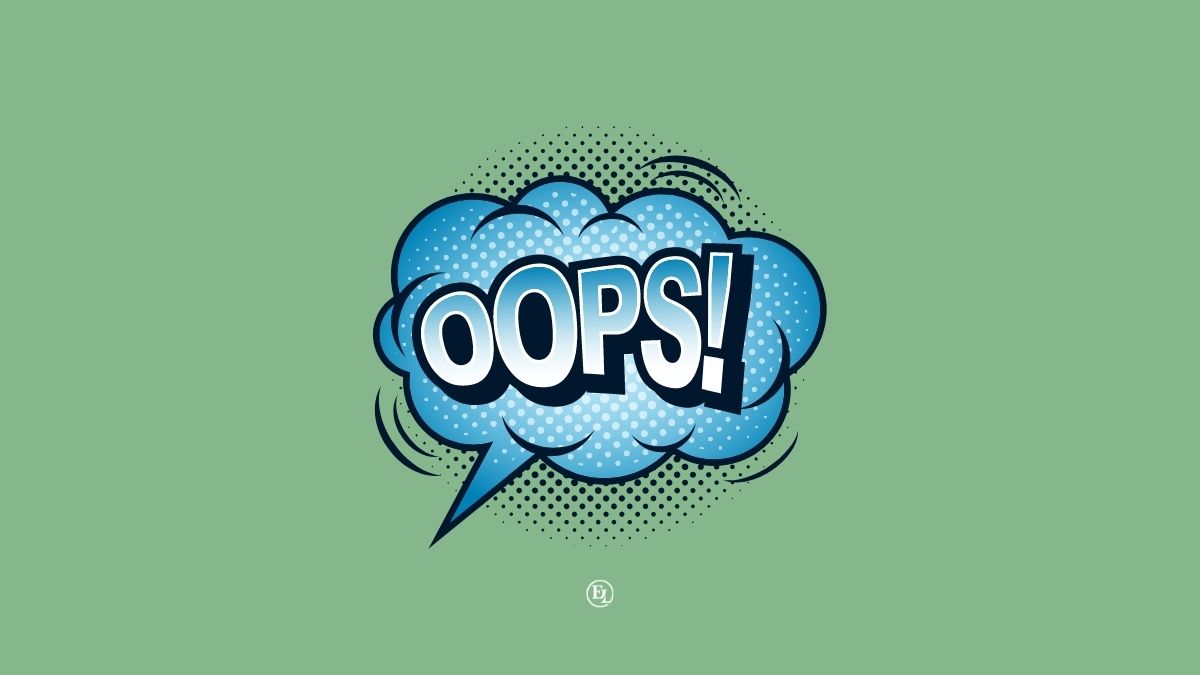Believe it or not, running a successful business, for the most part, is nailing the branding. So you’d think that business has evolved since the dawn of trade, but the bad branding examples we see daily claim otherwise.
What’s even more startling is that the number of branding mistakes hasn’t dropped with the rise of the Internet. In fact, the access to unlimited resources worsened things. Nowadays everyone thinks they can create a logo or even build an entire brand only with the help of Canva, logogenie, or any of the AI design tools that have been coming out like mushrooms since ChatGPT was introduced at the start of 2023.
Jump directly to:
1. Attaching the brand to the wrong products
2. Focusing only on visuals
3. Not considering SEO
4. Jumping from plan to plan
5. Inconsistency and conflicting messaging
6. Not being specific
7. Dismissing the importance of trademarks
8. Being company-centric
9. Loss aversion marketing
10. Overlooking the internal team view
11. Getting a cheap logo
12. Spending on fancy print marketing
13. Associating with the wrong brand
14. Greenwashing
15. Buying stock photos
16. Not understanding the meaning of branding
16 branding mistakes you want to avoid
To save you the trouble of rebranding or becoming a memefied internet sensation (although if you’re smart enough you can turn the publicity to your advantage) we made a list of the worst branding mistakes businesses make.
Attaching the brand to the wrong products
Brands often make the mistake of attaching their name to products that don’t align with their perceived image. For instance, customized promotional items, such as customised lanyards, can be effective branding tools if they resonate with the brand’s identity and values. Ensuring these products are high-quality and reflective of the brand’s standards is crucial to avoid a negative impression.
We recently came across a prime example when we were approached by a technology firm to make custom perfume tubes that they would infuse with a scent and give to their clients. The foundation of the idea could easily lead to a negative representation of the company as the “thoughtful gift” could have a scent that caused their customer displeasure.
Evan Rosenberg, Founder and CEO of Powerhouse Prints
Focusing only on visuals
As a green/social entrepreneurship profitability consultant, speaker, and author, I look at how branding can amplify regenerative businesses: I help develop and market profitable products/services that turn hunger/poverty into abundance, war into peace, racism and other kinds of othering into equity and catastrophic climate change into planetary balance.
Shel Horowitz, Transformpreneur at Going Beyond Sustainability
Not considering SEO when branding your business
It is bad branding not to consider SEO in the era of Google. You should always take into account how your brand and brand name will positively or negatively impact your business rankings online. Using major keywords in your business name or punch line will help you in the future rank better for important keywords. Keeping the impacts of your branding on your SEO will help you rise above your competition as this is frequently not considered.
James Watson – Owner and Director of Marketing at Omaha Homes For Cash
Jumping from plan to plan
You need to remember that most effective marketing plans require a long look. They take time before seeing the inevitable payoff. Test your marketing first and then build out the rest of your strategy based on the results of your testing. Each marketing campaign should be built upon the success of the previous campaign; and over time, you will see your results improve. Marketing builds on itself, so the more you market, the better results you’ll get.
Wendy Young, Marketing Assistant at Bootstrap Local
Inconsistency and conflicting messaging
One of the biggest branding mistakes that I see businesses make is that the messaging on all marketing materials and consumer touchpoints are inconsistent or conflicting. Incongruent messaging leads to consumer confusion and can negatively impact sales.
Kristin Marquet, Owner at Marquet Media
An example of bad branding I see most commonly, especially from new and fast-scaling businesses, is a lack of consistency. Consistency is everything. Your brand messaging, logo, tone of voice, color schemes, straplines – everything needs to be rock solid and consistent for a long period of time to build equity around the brand.
Consider the most significant brands in the world right now. McDonald’s has used the same golden arches for nearly 60 years; it’s it’s impossible to use the word swoosh without thinking of Nike and most adults in the world would be able to identify Apple’s advertisements even without the brand name being used because of its logo and signature use of white space.
Matt Caspell, Founder of Lumo Digital
Not being specific
The opposite is actually true, and the more specific you get with your branding, the more your ideal audience will feel you created your product specifically for them, making them more likely to buy. Then, once you have traction, even people outside your ideal branded audience will start to buy, so being specific in branding won’t hold you back long-term and it will help you get ahead when starting out.
Stacy Caprio, Marketing at Renuw Skincare
The biggest branding mistake I see businesses make is that there’s often a disconnect between who the brands think they are, and who the audiences think the brands are because of poor communication.
Brands and businesses aren’t typically crystal clear on who their target audience is, and they market and brand in a way that doesn’t necessarily translate to the audience, so a millennial product Brand, for example, thinks they’re talking to their ideal target when in reality they’re reaching 50-somethings instead who aren’t buying.
The best way to avoid this is to research, listen to your audience and before being clever in your content, to get to know your audience’s pain points, understand their language and THEN speak to them in a way that’ll resonate. Your message won’t get lost in translation and what you want to transmit will align with what they understand about your business. When in doubt, be clear rather than clever.
Sabrina Scholkowski, Owner at Sociouse
Dismissing the importance of trademarks
Another related mistake is inconsistent use of registered marks in consumer markets, or a complete non-use of the registered mark. This may happen more often if the business owns a family of trademarks. Trademarks can be cancelled for non-use, thereby impacting the brand’s reputation. How to avoid this mistake: Ensure that there is a market for and actual sales for the product/service that bears the registered mark; have a foolproof branding strategy at play – don’t register marks that you will likely not lose.
Marsha S. Cadogan, Lawyer and Consultant at MSC Intellectual Property
Being company-centric
The secret of success of small brands is their closeness to the voice of the consumer. When deciding the value proposition or branding strategy, keeping the requirements of the customer is essential. A brand should have a clear and consistent character on different social media platforms. If a customer meets a different persona on different social media platforms, there is a good chance that they can get confused and back out.
Avinash Chandra, Founder and CEO at BrandLoom
Overlooking the internal team view of the brand
Abhishek Agarwal, Founder of Design’N’Buy
Failing to build brand advocates from within is definitely a bad branding move.
While it is important to know how the business’ product/service is valuable to consumers, failure to train and empower employees to live out the essence of the brand will lead to a weak brand presence.
A salesperson solely motivated by meeting a quota will not effectively convey to a consumer how the transaction is more than an exchange of money for a product and/or services. That consumer will end up looking for a cheaper or better solution somewhere else.
Business owners/leaders need to help their employees understand why what the company is doing matters. They need to empower team members to flesh out that vision through their own individuality, going beyond fulfilling a job description and selling a product/service.
Vincent Lee, Owner of Can You Brand Me
Getting a cheap logo
Emily Messing, Owner of EJM Design
Spending on fancy print marketing
Getting your URL/website up and running is key. I created online stationery for proposals/invoices, ordered my cards online and made downloadable materials as leave-behinds for people looking for more information to help me find clients more quickly. You need to look professional and have a website to be taken seriously but embossed paper/watermarks/heavy card stock is not going to accelerate your sales cycle.
I know many business owners who spent thousands of dollars on these things and found it was a waste of money. Find reference customers quickly, use them to get testimonials/referrals. There’s plenty of time later to dress things up!
Paige Arnof-Fenn, Founder and CEO at Mavens and Moguls
Associating with the wrong brand
After 3 months of asking for sponsorship, they only received about $100,000, and 3 weeks later is the event date. A few days later, a cigarette company offered them a million-dollar sponsorship, to have their brand banner up during the event all the time.
The event company owners were tempted as the event’s date draws near. But they decided not to go ahead as it would hurt their company brand. Just less than a week before the event, another company decided to sponsor $150,000 for the event.
The owners did not give up till the end and did not associate with the wrong brand.
Cyrus Yung, Director of Ascelade
Greenwashing
This is especially rampant in industries of fashion, food, and traveling, which are big contributors to pollution and waste. If the company undergoes a green “rebrand,” displays vague facts and figures about their sustainability performance, and continues unethical employment and operational practices, these are red flags that display they don’t mean any of the words they advocate.
Sharon van Donkelaar, CMO at Expandi
Buying stock photos
For instance, using images that show offices and environments different from where a business is operating would signal dishonesty and may result in losing business. If the branding image is as essential to the business as the quality of their service or product then the business should hire a professional photographer who would give a more honest and creative image of the business brand.
Sam Fatima, Lead Photographer at Sam Headshots
Not understanding the meaning of branding
For instance, Eddie Bauer’s brand used to be comfortable and rugged outdoor gear and clothing. The quality was so good, they even had a lifetime warranty. Unfortunately, they destroyed their brand by removing the quality. Patagonia has not done this, which is why their brand remains intact and Eddie Bauer has been losing market share for years.
Another great example is Microsoft versus Apple. Microsoft was known for Windows and Office, but these were not what made the Microsoft brand. Microsoft has name recognition and a solid product line, but they lack a brand. Apple, on the other hand, has name recognition and customers know what to expect when they buy an Apple product. The products will be cutting edge and integrate various design elements that make them pleasing to look at, touch, and use. Apple’s brand has allowed them to build a loyal customer base. Microsoft never fully established a brand and had to switch to SaaS billing to create a steady cash flow.
Another great example is Walmart versus Target. Walk into any Walmart and you never know what you will get. Some look old and decrepit, even if they have implemented the latest signage. Worker uniforms at some are neat and clean, but old and worn at others. Shelves will be organized at some and messy at others – bad branding! Target, on the other hand, provides the same experience regardless of the store you visit.
Your brand lets your customers know who you are as a company and what they can expect every time. There is uniformity, regardless of the number of locations. For instance, Nike will not make cheap shoes, because that would undermine their brand. Nike wants to be the Lexus of athletic wear, so they won’t make a crappy shoe. Compare that to what other retailers like Eddie Bauer have done to their brands.
The number of times I have to talk executives out of accidentally destroying their brand would amaze you
Anthony Babbitt, MS, MCSE, Founder of Babbitt Consulting
Conclusion
We know it’s easier to pull off bad branding than it is to avoid making any of the branding mistakes listed above. However, that doesn’t give you the right to make a disaster of your brand. If you don’t know how to build a brand you better hire a professional who knows what is doing. It will be an investment in the long run.
More must-read stories from Enterprise League:
- Step-by-step TikTok marketing for small businesses.
- Innovative customer appreciation ideas for small businesses.
- These are the must-have apps you’re going to need if you’re an entrepreneur.
- Find out how to expand and improve your business knowledge.
Related Articles
Workplace Violence or Drug Accusations: Protecting Yourself Legally
Accusations of workplace violence or drug-related misconduct can derail a career, even when the claims are unfounded. A single allegation can lead to suspension, internal investigations, damaged professional relationships, and in serious cases, criminal charges....
Workers’ Compensation Costs for Factory and Warehouse Forklift Accidents
Forklifts play a central role in day-to-day operations across factories and warehouses, but they also create a significant risk of injury. When a forklift overturns, strikes a pedestrian, or drops a load, the financial impact reaches far beyond the immediate medical...
Delayed Construction Injury Reports: Impact on Workers’ Comp
Construction work carries unavoidable risks, which is why workers' compensation exists to protect employees after an injury. But one factor can alter the entire outcome of a claim: delayed reporting. In the construction industry, where injuries often occur in...
Workplace Violence or Drug Accusations: Protecting Yourself Legally
Accusations of workplace violence or drug-related misconduct can derail a career, even when the claims are unfounded. A single allegation can lead to suspension, internal investigations, damaged professional relationships, and in serious cases, criminal charges....
Workers’ Compensation Costs for Factory and Warehouse Forklift Accidents
Forklifts play a central role in day-to-day operations across factories and warehouses, but they also create a significant risk of injury. When a forklift overturns, strikes a pedestrian, or drops a load, the financial impact reaches far beyond the immediate medical...






